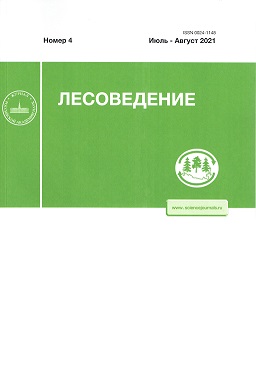ISSN: 0024-1148 Russian Journal of Forest Science. 2012, No. 4, pp. 31-38
| INTENSITY OF PHOTOSYNTHESIS IN QUERCUS ROBUR PHENOGICAL FORMS UNDER MOISTURE DEFI CIT |

| Molchanov A.G. Institute of Forest Science, Russian Academy of Sciences (ILAN): Sovetskaya st. 21, Uspenskoe village, Moscow Oblast, 143030 |
E-mail: a.georgievich@gmail.com |
Received: 20 october 2011
The studies were conducted at the Tellerman Forestry of the Institute of Forestry, Russian Academy of Sciences (Voronezh region). The sample plots were located in a 250-year-old oak forest (quality class III) on the south-facing slope with a groundwater table of about 8-9 m, where the late-leafi ng form of oak trees predominated. The roots of this form reach the groundwater capillary fringe. At the same time, the studies were carried out in a solonetz oak forest of quality class III with the early-leafi ng form of oak trees whose roots were mainly spread in the shallow soil layer (10-40 cm). The investigations were carried out under insuffi cient humidity when the water potential of leaves was 1.6 MPa. Based on the daily course of photosynthesis and light curves of photosynthesis obtained in cloudy and fair with some cloud days, it was concluded that the early-leafi ng oak form endured a water defi cit more easily as compared to the late-leafi ng form did. This circumstance explains the fact that the early-leafi ng form of oak is restricted to dry and very dry sites. In more favorable sites, this form cannot compete with the late-leafi ng one, since it is more often damaged by early spring frosts and phyllophages of the early spring complex.

